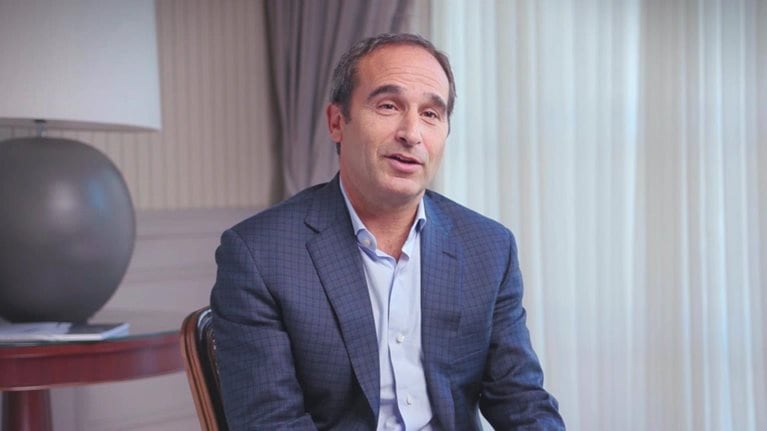It’s a tough time to be running a regional or midsize bank. On the one hand, they’re competing against large global banks that continue to build market share and woo away customers. On the other, they are facing the increasing popularity of fintech companies that let consumers bypass banks altogether. Add to that the steep regulatory and reporting requirements, the cost of upgrading legacy tech systems, and the general challenge of trying to operate at scale in an environment of near-zero interest rates and increased cyberattacks. COVID-19’s arrival curbed business activity while accelerating digitization and changes in consumer behavior.
The net result is intense pressure to ramp up productivity in that middle tier—the regional banks, community banks, credit unions, cooperatives, and midsize banks that typically have $50 billion to $150 billion of assets under management. To achieve that, most of these banks will need to transform their operations with a customer-centric, end-to-end approach.
The question, of course, is how this can be achieved when 70 percent of transformations fail. In our experience, some of the main challenges to a successful transformation are changing the organizational culture and developing new digital capabilities. That challenge is exacerbated for the regional or midsize banks that lack the capital or other levers that global banks have to invest in transforming their technology and workforce structure. In this article, we look at what one midsize bank did to significantly improve productivity and the lessons it holds for others to create the conditions for a more holistic transformation as economic conditions improve.
The productivity challenge of midsize banks
As noted in McKinsey’s latest Global Banking Annual Review, some 36 percent of banks worldwide earned a mere 1.6 percent return on tangible equity (ROTE)—a measure of profitability—over the past three years. Most of these “challenged banks” operate below scale and are “caught in the middle,” with neither high single-digit market share nor any niche propositions. Many operate in Western Europe, where they must contend with weak macro conditions such as slow loan growth and low interest rates.
For many midsize banks, these conditions make transformation an imperative, not just to improve productivity but, ultimately, to survive. As noted in a recent report from the McKinsey Global Institute, companies must push harder to automate production tasks, shift to online channels, and invest in digital transformation. While such investments are critical and should be prioritized as economic conditions improve, they are not what makes or breaks a successful transformation.
In our experience, the main hurdle to achieving a successful transformation is often shifting the mindset of the people who work in an organization. In short, it’s all about the “soft stuff”— articulating bold ambitions at the top, clear messaging and role modeling throughout management, and engagement at all levels.
We suggest leaders focus on not only the financial and operational metrics around performance but also the critical measures of organizational health. Our research shows that transformations that have a strong emphasis on organizational health have a 35 percent higher total returns to shareholders (TRS) over an 18-month period compared with those that don’t (Exhibit 1).

A key factor in improving organizational health is to focus on capability building—that is, helping employees learn not only the technical skills they need to do their jobs but also leadership and foundational management skills. For example, data from McKinsey’s Organizational Health Index (OHI)1 of 38 publicly listed companies showed that when companies included more than 30 percent of their workforces in capability-building programs, they enjoyed TRS that were 43 percent above benchmarks after 18 months. These companies also improved OHI scores by an average of 12 percentile places. Such capability building is especially critical in industries such as banking, in which during the pandemic one part of the workforce may have been dealing with the stress of remote-working environments while another faced the challenge of maintaining personal safety when serving customers face to face. In many organizations, evolving thinking about capability building points to a future in which financial investment in resources may be less important than time and commitment offered by senior executives.
The power of investing in the soft stuff
Leaders typically think of empathy, resilience, kindness, communication, and other skills as the soft stuff of effective management. Though managers may recognize how important such traits are, they often mistakenly believe that these skills are innate to individual leaders. In fact, they are much more likely to be honed through learning. Moreover, we find five related approaches serve as critical enablers of successful transformations. They are: a shared vision and culture of success; setting challenging and inspirational targets; an emphasis on servant leadership; a focus on the “how” of delivering superior results; and the ability to measure results. The experience of one midsize US bank illustrates the important roles these factors play in launching and maintaining momentum for transforming enterprise-wide performance.
-
A shared vision and culture of success. Transformation programs are often like pointillist paintings: each individual dot on a canvas doesn’t amount to anything, but bringing them together reveals something artful. In a similar vein, one trait of transformational leaders is the emphasis on “we” over “me.” While these leaders celebrate individual success, they do so within the context of a broader focus on teamwork and the impact that their organization has on the stakeholders they serve. They build diverse and inclusive leadership teams to send a powerful message to employees and customers and because diverse and inclusive teams deliver better results.
When executives at one midsize US bank announced a transformation effort aimed at fundamentally and sustainably improving performance, they made a priority of building teamwork and maintaining a stakeholder focus. Within the first year of the bank’s transformation effort, more than 15 percent of the organization was playing a formal role in the effort, and plans were under way to nearly double that participation. To secure that kind of hands-on activity from hundreds and hundreds of employees, leadership designated frontline workers closest to the bank’s customers to lead the effort and claim credit as its heroes. Leaders essentially became coaches and team captains to the frontline workers, thus enabling them to “take the winning shot.” Mobilizing frontline employees and unleashing their energy across the bank did more than generate additional improvement ideas; it also sparked change across the organization’s branches and geographies.
To support broader activity across the organization, management invested in enrolling all the bank’s people leaders and everyone with a direct role in the transformation through several days of basic leadership and execution training. Transformation leadership was able to build a common language and a common way of working. One executive referred to this training effort as increasing the bank’s “talent density” and underlining the need to make common sense common practice in problem solving. The effort expanded foundational capabilities and fostered energy, collegiality, and an understanding of employees’ value to the bank, with 99 percent of employees recommending these training programs.
-
Setting challenging and inspirational targets. For most managers, the greater danger lies not in setting aspirations too high and falling short but rather in setting them too low and achieving the less ambitious targets. Transformation starts with bold leaders setting bold aspirations for their organizations that both inspire and motivate employees to go to places they didn’t previously think possible.
Executives at the US bank noted above took a deep breath when they announced their transformation effort. After all, many such past efforts had delivered only lukewarm results. But in declaring their intent to deliver performance gains several times greater than they had historically achieved, they made a convincing case that their aspiration wasn’t merely incremental but aimed at achieving the bank’s full potential. Within three quarters, the effort had already delivered sufficient value to give them confidence that they would more than double the bank’s net income over a four-year time horizon. Moreover, signs of transformation and impact beyond financial performance began popping up throughout the organization. For example, the bank launched a lending product in a matter of weeks—something that historically took months—and exceeded an ambitious volume target by 15 times.
-
An emphasis on servant leadership, starting at the very top. Think of this as the boss factor. How people manage their direct reports has a significant impact on not only the well-being and health of their team but also the organization’s bottom line. We believe that transformative leaders understand that the individual drive, self-focus, and personal skills and abilities that helped them achieve their roles as bosses are not necessarily the same ones needed to be effective leaders. More active listening, understanding that one’s personal motivations are not everyone else’s, and enabling others to deliver results rather than delivering them yourself, are some of the skills that transformative leaders learn and hold teams accountable to learn as well.
Before the kickoff meeting of the midsize US bank’s transformation project, each member of the leadership team stacked hands, pledged that the effort would be the bank’s number-one priority, and committed personally to be “all in” on the effort. Each team member took on a formal role in the initiative and developed a personal change story: their explanation of why the bank needed to transform itself. Employees later described how these stories not only inspired them and helped them connect better with the transformation’s leaders but also served to convince them that this effort was different from past change programs. Leaders underwent changes, too. They ignited employees’ intrinsic motivation and empowered them by providing opportunities, tools, and capabilities to drive change. In doing so, leaders stepped back from a traditional command-and-control leadership style to a more agile, consultative, and collaborative stance.
-
Focusing on ‘how’ more than on ‘what.’ Suppose you were looking to achieve a sustainable step-change in your own physical performance in order to discover your full athletic potential. You would probably build new durable habits around your daily operating schedule, including your training regimen and diet. Simply signing up for a gym membership, or purchasing shiny new exercise equipment, or changing your diet for a brief period of time by themselves would fall short.
Similarly, an enterprise looking for a rapid and sustainable step-change in performance would need to do more than just establish a Project Management Office or set up a program tracking tool. Better to focus heavily on issues such as how employees are aligned across the entire organization; how management mobilizes and activates employees to execute the change; and how to enable the bank to renew by pivoting when necessary and grow through the process. Ultimately, transformation is about arranging employees behind shared values and delivering results. When such a step-change performance boost is working, there will be noticeable signs of it: perhaps an uptick in the clock speed of the weekly decision-making process, or notice that some of the organization’s sacred cows have been put to pasture.
The bank didn’t just want to radically improve its financial performance; it sought to rewire its organization in a durable transformation of scale and speed. By emphasizing the “how”—the behavioral habits contributing to the bank’s organizational health—the bank saw results improve dramatically. It joined the ranks of top-quartile companies on the OHI global database within 18 months and was on track to become a top-decile organization. Beyond these quantitative results, the CEO noticed a different tone and mood around the organization: employees started to dress more professionally and carried themselves with greater enthusiasm and improved morale. Reaction times gained speed compared with before the transformation effort, and one executive referred to the general mood as being “addicted to winning” in efforts to grow and outpace competitors.
-
Measuring the ‘soft stuff.’ The soft stuff is hard to measure. Every leader knows how tough it is to get the most out of their people. That’s especially true during a large-scale transformation in which many may feel threatened by change and unsure of what it means for their role in the organization. That’s why it is critical not only to bolster communications, leadership skills, training, and organizational health but also to measure results. Successful companies understand that they must dynamically allocate financial capital to achieve maximum returns. Less obvious is that the same is true for human capital. Companies that quickly allocate and reallocate talent to priorities have a significantly higher chance of outperforming competitors (Exhibit 2).
At the US midsize bank, leadership undertook an ambitious effort to elevate and assess human capital. In addition to taking an organizational-health audit every six months, leadership took an analytical, evidence-based approach to identify top talent and the roles critical to delivering both day-to-day performance and the transformation effort. McKinsey research linking talent to value shows that approximately 60 to 70 percent of a company’s value agenda is generated by roughly 25 roles. Bank management also found that 20 to 25 roles were responsible for creating 80 percent of the bank’s value. Digging deeper, leadership determined which employees were most suitable to assign to priority transformation projects. They then deprioritized and delegated less important tasks to ensure that these key individuals had the time and resources needed to succeed. In addition to thinking analytically about talent, the bank also elevated talent discussions to the executive level, ensuring that all leaders recognized the bank’s top talent, the priorities they were working on, and what development opportunities were required to ensure that they would continue to grow at the bank.

The transformation era
Midsize banks are far from alone in facing the need for rapid transformation in the coming years. With the speed of digital change only accelerating amid the COVID-19 pandemic, it’s clear that at least some banks under pressure will face the choice between being a disruptor or being disrupted. The good news is that the shift to digital channels, contactless banking, hybrid working, and more agile organizations offer the opportunity to achieve healthier organizations, happier employees, and better results.
While change can be intimidating in difficult and uncertain times, it is possible to improve the odds of success. The hard stuff will always matter: investing in new technologies, making tough choices around business lines, and restructuring the organization to align with where the world is going versus where it has been. The best first step, though, is to focus on the softer elements of transformation to build an organization that’s a magnet for talent and customers in the digital age.


